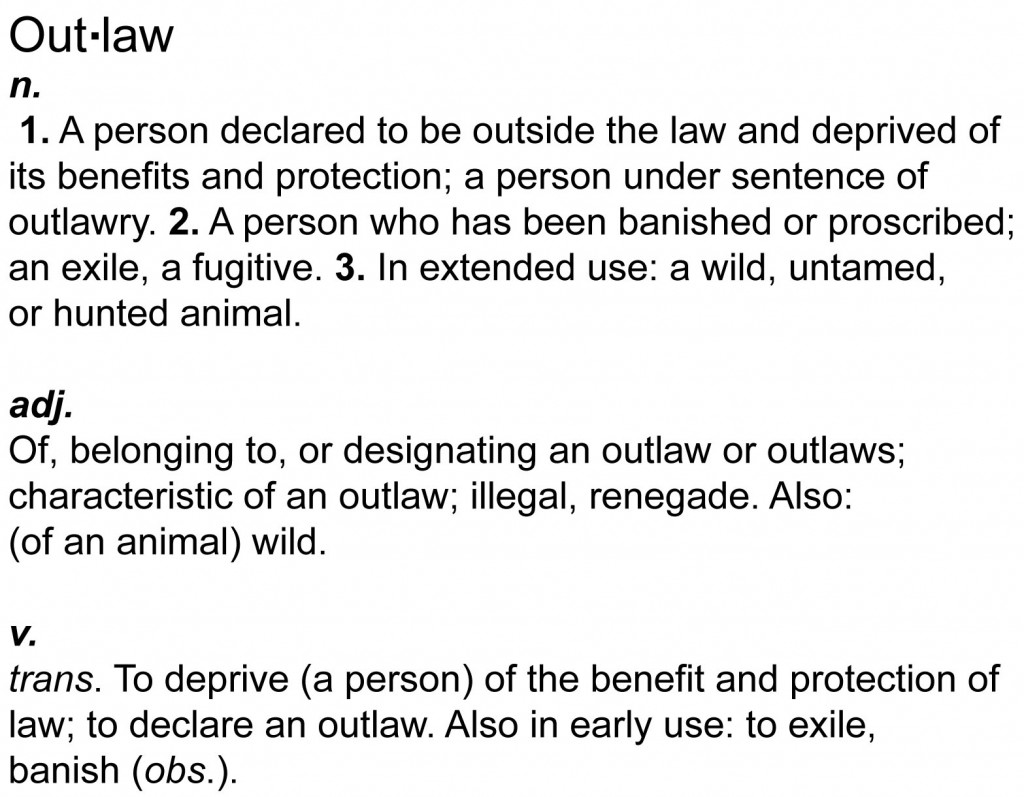 The word “outlaw”—outside of the law—implicitly articulates the intimate relationship between geography and the law. From the perspective of state-makers and capitalists, the groups of outlaws I’m collectively labeling “Motley Crews” (as a shorthand) pose a grave ideological and spatial threat to the normative relations between bourgeois philosophies of law, sovereignty, and the state (cf. Spatiality & Power). Poachers, commoners, pirates, bandits are all Motley Crews. Leaving aside the more complicated cases of rebel insurgents and mafia, Motley Crews’ transgressions against property could be classified as “social crimes” (Hay et al. 1975; Hobsbawm 1959). What’s more, they enact the critique that Marxists have long made against the alloyed ideologies of law, property, and state. In reporting on legislation against thefts of wood, Marx explained that the criminal nature of the theft was not in its attack against wood as a sensuous object, “but in the attack on the wood as part of the state system, an attack on the right to property as such” (1842). Drawing from a more consciously and politically assertive example, Rediker similarly explains that 18th Century pirate societies were wedded by a “legal philosophy that was not … an imitation of ‘the legal government’ but rather a critique of it” (2004:42).
The word “outlaw”—outside of the law—implicitly articulates the intimate relationship between geography and the law. From the perspective of state-makers and capitalists, the groups of outlaws I’m collectively labeling “Motley Crews” (as a shorthand) pose a grave ideological and spatial threat to the normative relations between bourgeois philosophies of law, sovereignty, and the state (cf. Spatiality & Power). Poachers, commoners, pirates, bandits are all Motley Crews. Leaving aside the more complicated cases of rebel insurgents and mafia, Motley Crews’ transgressions against property could be classified as “social crimes” (Hay et al. 1975; Hobsbawm 1959). What’s more, they enact the critique that Marxists have long made against the alloyed ideologies of law, property, and state. In reporting on legislation against thefts of wood, Marx explained that the criminal nature of the theft was not in its attack against wood as a sensuous object, “but in the attack on the wood as part of the state system, an attack on the right to property as such” (1842). Drawing from a more consciously and politically assertive example, Rediker similarly explains that 18th Century pirate societies were wedded by a “legal philosophy that was not … an imitation of ‘the legal government’ but rather a critique of it” (2004:42).
As what could also be called “social outlaws,” Motley Crews challenge the way in which the law effectively cordons-off property from political questions of distribution; in doing so, they reassert the actuality of property as a bundle of social relations. And social relations are, of course, innately cultural relations. Indeed, what distinguishes “social crimes” from “unqualified crimes” is that the former retain a degree of popular legitimacy and consensus within a culturally constituted “Moral Economy” (Hay et al. 1975; Thompson 1993). Like Thompson’s “English Crowd,” Motley Crews are political cultures formed in and out of situated and accumulated high-stakes struggles over lives and livelihoods. In some cases, these groups manage to build not only more democratic and economically egalitarian political cultures, but also ones that transcend differences of nationality, race, occupation, and even—though more rarely—gender, while not erasing those differences (Hay et al. 1975; Linebaugh and Rediker 2000; Rediker 2004).
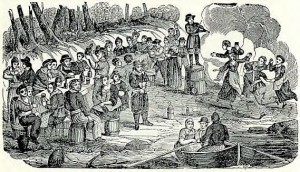 The cultural politics of the outlaw—as narrative and embodied practices—demonstrate its slippery political potential: on one hand, by undermining hegemonic political, social, spatial, and economic relations, outlaws publically signal the radical potential of political possibility; on the other hand, they curtail those same possibilities by providing the constitutive fodder for state-based discourses of subaltern criminalization and the legal impunity of dominant groups. Foucault described this profane synergy as the management of differentiated illegalities in which only the illicit actions of the state and dominant groups are structurally unpunished (1995:277). He also notes how the spectacular violence of execution could sometimes elicit a fierce reaction from crowds condemning the sovereign display of power, exposing the illegitimacy of that same power. Linebaugh describes a similar dynamic in which crowds at Tyburn pulled on the invisible threads of their Moral Economy to overturn the horrific synergy between capital punishment and medical science, whereby executed bodies were being commodified and sold to doctors for anatomical study (Hay et al. 1975). The newspapers dismissed the indignant Tyburn crowds as a “mob.” Again, the knife-edge politics of outlawry cuts sharply in both ways.
The cultural politics of the outlaw—as narrative and embodied practices—demonstrate its slippery political potential: on one hand, by undermining hegemonic political, social, spatial, and economic relations, outlaws publically signal the radical potential of political possibility; on the other hand, they curtail those same possibilities by providing the constitutive fodder for state-based discourses of subaltern criminalization and the legal impunity of dominant groups. Foucault described this profane synergy as the management of differentiated illegalities in which only the illicit actions of the state and dominant groups are structurally unpunished (1995:277). He also notes how the spectacular violence of execution could sometimes elicit a fierce reaction from crowds condemning the sovereign display of power, exposing the illegitimacy of that same power. Linebaugh describes a similar dynamic in which crowds at Tyburn pulled on the invisible threads of their Moral Economy to overturn the horrific synergy between capital punishment and medical science, whereby executed bodies were being commodified and sold to doctors for anatomical study (Hay et al. 1975). The newspapers dismissed the indignant Tyburn crowds as a “mob.” Again, the knife-edge politics of outlawry cuts sharply in both ways.
Hobsbawm’s writings on “primitive rebels” (1959) and “social banditry” (2000) are often critiqued for romanticizing Motley Crews and overstating their radical political potential. But these critiques—though not entirely unfounded (Blok 1974)—miss the point of his intellectual pursuit. Neither Hobsbawm nor the Warwick crew is claiming that outlaws are always and everywhere proto-revolutionaries. Hobsbawm, for instance, simply wants to illuminate banditry’s subjugated social-political histories. Linebaugh and Rediker (2000) are similarly aiming to uncover the silenced and interconnected histories of the Revolutionary Atlantic, while perfectly cognizant that neither pirates nor prostitutes are necessarily rosy or heroic characters. These historians show the long-contested hegemony of the law and the complicity of the state-centric “archive” in producing outlaws as universal foes, the “enemy of all”—pirates being perhaps the original global prototype now inherited by “terrorists” (Heller-Rozen 2009).
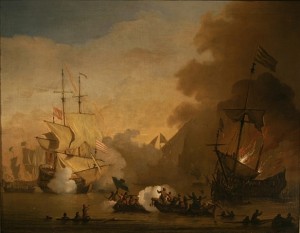 Seeing Motley Crews as political cultures helps illuminate why the threats they pose to regimes of accumulation and rule exceed narrow explanations based on the social relations of property. As Marx would note, social outlaws are not simply “breaking the law”; they are a threat to the law itself—and, by extension, the state. Indeed, it’s not coincidental that crime and law ballooned alongside the growth and intensification of capitalist—particularly, primitive—accumulation (Foucault 1995; Thompson 1975). The interpellation of Motley Crews (by the law) as outside of the law means that they necessarily operate within and socially produce territorialities that often mesh uncomfortably with those of the state—though not necessarily in ways counter-productive to government (cf. “Governable Spaces”). But regardless of whether they exhibit radical or reactionary political forces, outlaws are embedded in and produce particular geographies: commons and enclosures; the sea, ports, entrepôts, and slums; frontiers, forests, plantations, and “jungles”; urban-rural linkages and global illicit networks
Seeing Motley Crews as political cultures helps illuminate why the threats they pose to regimes of accumulation and rule exceed narrow explanations based on the social relations of property. As Marx would note, social outlaws are not simply “breaking the law”; they are a threat to the law itself—and, by extension, the state. Indeed, it’s not coincidental that crime and law ballooned alongside the growth and intensification of capitalist—particularly, primitive—accumulation (Foucault 1995; Thompson 1975). The interpellation of Motley Crews (by the law) as outside of the law means that they necessarily operate within and socially produce territorialities that often mesh uncomfortably with those of the state—though not necessarily in ways counter-productive to government (cf. “Governable Spaces”). But regardless of whether they exhibit radical or reactionary political forces, outlaws are embedded in and produce particular geographies: commons and enclosures; the sea, ports, entrepôts, and slums; frontiers, forests, plantations, and “jungles”; urban-rural linkages and global illicit networks
The point is that outlaws are—and are cast as—more than “common criminals”; repression against them depends largely on the degree to which they pose a threat to what Schmitt would call the nomos of the state—its spatio-juridical order. Schmitt’s paradigm of sovereignty, as the monopoly to decide the exception, is at the same time a monopoly to decide what constitutes “the norm,” meaning that the sovereign decides whether outlaws pose an existential threat (2005:13). For Schmitt, “It is one thing to be an enemy, another to be a rebel” (2006:142). As transgressors of the nomos, social outlaws—and, above all, rebels—do not even have the status of “criminals” or “just enemies.” Citing Kant, Schmitt contends that outlaws require more than war: “A preventive war against such an enemy would be considered to be even more than a just war. It would be a crusade, because we would be dealing not simply with a criminal, but with an unjust enemy, with the perpetuator of the state of nature” (2006:169, emphasis added). (As far as “nature,” it’s worth remembering that “outlaw” was once used to refer to a “wild” animal, especially an untamable horse.) Echoing Foucault’s discursive analysis of race war (2003), the danger of the outlaw, for Schmitt, is its internality to the social body.
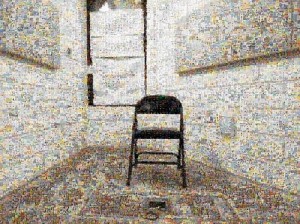 I want to be clear: Of course, outlaws are not always “primitive rebels” (Hobsbawm 1959); being “outside the law” does not automatically produce a proto-anarchist under every rock. At times, outlaw territorialities indeed defy state obsessions of legibility and fixity (Craib 2004; Foucault 1995; Scott 1998), but contrary to Scott’s theses (1998), illegibility, indistinction, and ambiguity can be just as productive for state power—e.g. Guantánamo, other military bases, offshore finance, and counterinsurgency. As Agamben (2005) argues, the production of indistinction between legality and illegality, war and peace, exception and the norm has become a paradigm of modern government—a trend plainly evident in contemporary militaristic “threat paradigms” (terrorist, narcoterrorists, criminal-insurgents, etc.). As I’ve noted before, the state itself has become the outlaw, the capo de tutti capi. Indeed, scholarship on mafias and political violence helps dispel any romantic notions of outlaws as necessarily “social” bands of swashbuckling Robin Hoods. The combination of outlawry and state power is perhaps the most brutal of all, reinforcing Derrida’s bleak ideas on the “force of law” and Agamben’s view of how “force” and “law” have been turned inside out (2005:37).
I want to be clear: Of course, outlaws are not always “primitive rebels” (Hobsbawm 1959); being “outside the law” does not automatically produce a proto-anarchist under every rock. At times, outlaw territorialities indeed defy state obsessions of legibility and fixity (Craib 2004; Foucault 1995; Scott 1998), but contrary to Scott’s theses (1998), illegibility, indistinction, and ambiguity can be just as productive for state power—e.g. Guantánamo, other military bases, offshore finance, and counterinsurgency. As Agamben (2005) argues, the production of indistinction between legality and illegality, war and peace, exception and the norm has become a paradigm of modern government—a trend plainly evident in contemporary militaristic “threat paradigms” (terrorist, narcoterrorists, criminal-insurgents, etc.). As I’ve noted before, the state itself has become the outlaw, the capo de tutti capi. Indeed, scholarship on mafias and political violence helps dispel any romantic notions of outlaws as necessarily “social” bands of swashbuckling Robin Hoods. The combination of outlawry and state power is perhaps the most brutal of all, reinforcing Derrida’s bleak ideas on the “force of law” and Agamben’s view of how “force” and “law” have been turned inside out (2005:37).
The complex relations between states and mafias, not to mention the latter’s capacity for taking on state-like qualities, gives mafiosi a similar aura of indistinction, invisibility, and a seemingly inevitable conservative bent. As New York mobsters insist, “There is no mafia.” Sociologists have conceptualized Sicilian mafia as an industry that first emerged to fill a legal-economic breach by selling “protection” (Gambetta 1996). Blok, however, contends, “The gradual emergence of what came to be known only later on as ‘mafia’ can be understood in the context of this development in which the central government, the landlords, and the peasants arranged and rearranged themselves in conflict and accommodation” (1974:11). Blok posits mafia as a historically situated agrarian class of “power brokers”—or violent peasant entrepreneurs—that served as the fulcrum of capitalist development and state formation as feudalism became unglued in Sicily. In the post-Soviet Russian context, Volkov (2002) shows how the violent entrepreneurs of organized crime acted as the handmaidens of the transition to capitalism and were pivotal figures in the reconsolidation of Russian statehood, particularly its repressive apparatus. The common denominator is that all these accounts echo Tilly’s metaphor of “state formation as organized crime” to describe the legal-illegal bindings of coercion, rule, and accumulation (1985). Foucault (2003) would similarly echo that the analogy of organized crime bears far greater resemblance to actual historical events than idealized “theories of right” and “social contracts.”
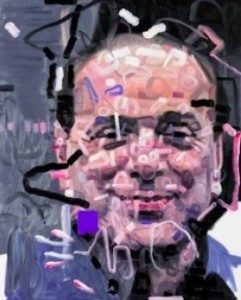 Though violent and ostensibly illegal, mafias coercively insure contracts and exchange, and secure investments, as Gambetta and Volkov contend; but they can also discipline labor and help territorialize state-based regimes of accumulation and government (Blok 1974; Volkov 2002). Marx traces a similar pattern of il/legality—or paralegality—in his account of primitive accumulation in England, where processes of landed dispossession persisted with changing relationships to state power, statecraft, and the law—from illegality to its legal codification a century later. Collectively, these accounts illuminate the constitutive paralegality—the outlawry—of the state-capital nexus, which is displayed perhaps most nakedly by offshore financial centers. As is well known, legal and illegal activities share the same physical, ideological, political, and social infrastructures. Illicit flows are not the ugly, shady “underbelly” of globalization; they are part and parcel of putatively “legal” global networks (Brittain-Catlin 2005; Castells 2000; Glenny 2008; Nordstrom 2007). For instance, it would be impossible to give an adequate account of today’s global financial architecture without including “offshore” capitalist paradises, which, as “sweatshops” for global capital, have been central in everything from corporate scandals and money laundering, to booming Eurodollar markets and recent innovations in “financial instruments” (Brittain-Catlin 2005).
Though violent and ostensibly illegal, mafias coercively insure contracts and exchange, and secure investments, as Gambetta and Volkov contend; but they can also discipline labor and help territorialize state-based regimes of accumulation and government (Blok 1974; Volkov 2002). Marx traces a similar pattern of il/legality—or paralegality—in his account of primitive accumulation in England, where processes of landed dispossession persisted with changing relationships to state power, statecraft, and the law—from illegality to its legal codification a century later. Collectively, these accounts illuminate the constitutive paralegality—the outlawry—of the state-capital nexus, which is displayed perhaps most nakedly by offshore financial centers. As is well known, legal and illegal activities share the same physical, ideological, political, and social infrastructures. Illicit flows are not the ugly, shady “underbelly” of globalization; they are part and parcel of putatively “legal” global networks (Brittain-Catlin 2005; Castells 2000; Glenny 2008; Nordstrom 2007). For instance, it would be impossible to give an adequate account of today’s global financial architecture without including “offshore” capitalist paradises, which, as “sweatshops” for global capital, have been central in everything from corporate scandals and money laundering, to booming Eurodollar markets and recent innovations in “financial instruments” (Brittain-Catlin 2005).
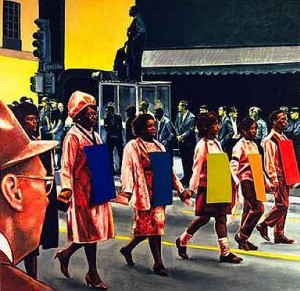 Postcolonial thinkers have few, if any, delusions about the two-faced actuality and ideology of the law (Coronil and Skurski 2006; Guha 1997; James 1989; Mbembe 2001). Fanon, for one, had particularly harsh words for those he excoriated as the “agents of law and order,” whether bourgeois native or foreign colonialists (2004). Although Fanon understood the law’s schizophrenia, he also realized its hegemony—backed in all instances by utter force—as helping circulate the lifeblood of colonialism’s Manichaean world. Similarly, in The Black Jacobins, L’Ouverture’s tragic flaw was how he internalized and never transcended the congenital colonial contradictions of the enlightenment; a cognitive dissonance that never afflicted the violence-ready Dessalines—the whip scars still throbbing on his back (James 1989). Besides noting that sanitized, peaceful origin stories are the biggest lies modernity tells itself about itself, Skurski and Coronil argue that taking colonialism squarely into analyses of violence unsettles “sharp distinctions between states of normality and of exception” (1996:8). Their suggestion expands and redefines “the conceptual field within which political violence is viewed. Seen from this perspective, practices and discourses of violence, like currents that shape the ocean floor, sculpt social landscapes, imperceptibly chiseling their configuration and life chances” (Skurski and Coronil 1996:3). Fanon had a keen understanding of these spatial undercurrents, which he saw as fundamentally shaped by the intense dialectics of both physical and symbolic violence, along with their deeply material, psychological, and corporeal implications (2004, 2008). He believed that only decolonial violence could dialectically break the hegemony of colonial violence.
Postcolonial thinkers have few, if any, delusions about the two-faced actuality and ideology of the law (Coronil and Skurski 2006; Guha 1997; James 1989; Mbembe 2001). Fanon, for one, had particularly harsh words for those he excoriated as the “agents of law and order,” whether bourgeois native or foreign colonialists (2004). Although Fanon understood the law’s schizophrenia, he also realized its hegemony—backed in all instances by utter force—as helping circulate the lifeblood of colonialism’s Manichaean world. Similarly, in The Black Jacobins, L’Ouverture’s tragic flaw was how he internalized and never transcended the congenital colonial contradictions of the enlightenment; a cognitive dissonance that never afflicted the violence-ready Dessalines—the whip scars still throbbing on his back (James 1989). Besides noting that sanitized, peaceful origin stories are the biggest lies modernity tells itself about itself, Skurski and Coronil argue that taking colonialism squarely into analyses of violence unsettles “sharp distinctions between states of normality and of exception” (1996:8). Their suggestion expands and redefines “the conceptual field within which political violence is viewed. Seen from this perspective, practices and discourses of violence, like currents that shape the ocean floor, sculpt social landscapes, imperceptibly chiseling their configuration and life chances” (Skurski and Coronil 1996:3). Fanon had a keen understanding of these spatial undercurrents, which he saw as fundamentally shaped by the intense dialectics of both physical and symbolic violence, along with their deeply material, psychological, and corporeal implications (2004, 2008). He believed that only decolonial violence could dialectically break the hegemony of colonial violence.
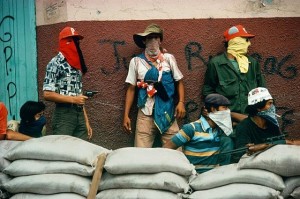 Nordstrom’s story of terror-warfare in Mozambique examines the “insidious hegemony of violence,” which seeks “the destruction of culture and identity in a bid to control (or crush) political will” (1997:xviii, 4). But she also shows how the hegemony of violence can be unraveled by the creative resistance of its victims, who don’t fight in the war but against it. Victimizers, of course, can be just as creative. Grandin’s exposition of the “Long Cold War” in Latin America—understood as the century-long violent containment of radical political struggles since the Mexican Revolution—reminds us that counterinsurgency is not entirely a politics of negation. Although bred by increasingly accelerated rhythms initiated by the “catalytic power of political reaction,” he sees counterinsurgencies as much more than outsized, paranoid, rearguard actions; they are relational, forward-looking, and dynamic political projects. The agility of counterinsurgencies critically depends on their ability to straddle that vast gray netherworld, that liminal legal space of the outlaw. Grandin adds, “Counterinsurgency, above all else, is choreography” (2010:3). Considering contemporary counterinsurgency doctrines based on strategies of “clear-hold-build,” the metaphor of “choreography”—and the dance of the legal and illegal—helps couch counterinsurgency as an explicitly spatial project that interlaces and territorializes the three-part dimensionalities of social space and power.
Nordstrom’s story of terror-warfare in Mozambique examines the “insidious hegemony of violence,” which seeks “the destruction of culture and identity in a bid to control (or crush) political will” (1997:xviii, 4). But she also shows how the hegemony of violence can be unraveled by the creative resistance of its victims, who don’t fight in the war but against it. Victimizers, of course, can be just as creative. Grandin’s exposition of the “Long Cold War” in Latin America—understood as the century-long violent containment of radical political struggles since the Mexican Revolution—reminds us that counterinsurgency is not entirely a politics of negation. Although bred by increasingly accelerated rhythms initiated by the “catalytic power of political reaction,” he sees counterinsurgencies as much more than outsized, paranoid, rearguard actions; they are relational, forward-looking, and dynamic political projects. The agility of counterinsurgencies critically depends on their ability to straddle that vast gray netherworld, that liminal legal space of the outlaw. Grandin adds, “Counterinsurgency, above all else, is choreography” (2010:3). Considering contemporary counterinsurgency doctrines based on strategies of “clear-hold-build,” the metaphor of “choreography”—and the dance of the legal and illegal—helps couch counterinsurgency as an explicitly spatial project that interlaces and territorializes the three-part dimensionalities of social space and power.
Serious attention to space and geography also helps untangle why some irregular wars are more violent than others. Whereas Weinstein (2007) emphasizes the importance of the material and ideological constraints faced by incipient rebel groups in explaining why some insurgencies are more violent than others, Kalyvas (2006) provides a more spatial analysis, creating a more complicated explanatory model. For Kalyvas, the logic of violence in civil wars hinges on efforts to shape civilian collaboration within delineated geographic spaces; the problem is that unavoidable information asymmetries creates an “identification problem” for combatants—an inability to distinguish friends and enemies among civilians. Violence is fiercest, he argues, in places where one group has gained an upper hand, but where full military control is still being contested by opposing combatants, creating a spike in selective forms of violence against “non-identifiable” civilians by the armed groups. In the process, communities are turned into intimate enemies of informants and gunmen who turn political violence toward social retribution and material gain, fueling “malicious denunciations” in which intimate violence becomes the “dark face of social capital” (2006:351).
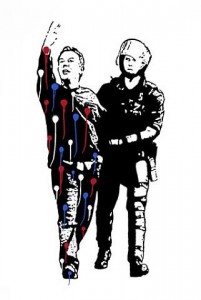 The contributions of explanatory models such as those of Kalyvas and Weinstein provide invaluable insights on the “rational” baseline logics of violence in civil wars. But they would inevitably miss nuances that must be gleaned ethnographically. Wood (2003), for instance, reveals how beliefs, values, and memory formed the basis of Salvadoran peasants’ turn toward armed insurrection in which desires of political participation and the “pleasures of agency” led them to defy an oppressive regime. Though never seizing state power, Salvadorans managed to break the accumulated hegemony of the politics of “the inevitable,” gaining an agrarian reform from below in the process. Feldman’s ethnographic and spatial account of “The Troubles” in Northern Ireland also goes beyond the numbers by examining how the body became a primary site and weapon of political struggle. He demonstrates how “the shrinkage of the space of political enactment”—namely, Belfast, neighborhood, prison, cell, and body—“corresponds to the expansion of the acting subject” with an increasing correlation between personhood and historical transformation (1991:10). Aretxaga critiques and compliments Feldman’s story by highlighting how political violence is a “thoroughly gendered structure of power” in which familiar spaces and emotions are embedded in social action and the articulation of novel political subjectivities. As Nordstrom notes, “Violence is a profoundly personal event, it is fundamentally linked to processes of self-identity and the politics of personhood” (1997:4). “Outlaw” can often be the privileged discourse for erasing not only politics, but also personhood—sometimes, however, the inverse can also prove true.
The contributions of explanatory models such as those of Kalyvas and Weinstein provide invaluable insights on the “rational” baseline logics of violence in civil wars. But they would inevitably miss nuances that must be gleaned ethnographically. Wood (2003), for instance, reveals how beliefs, values, and memory formed the basis of Salvadoran peasants’ turn toward armed insurrection in which desires of political participation and the “pleasures of agency” led them to defy an oppressive regime. Though never seizing state power, Salvadorans managed to break the accumulated hegemony of the politics of “the inevitable,” gaining an agrarian reform from below in the process. Feldman’s ethnographic and spatial account of “The Troubles” in Northern Ireland also goes beyond the numbers by examining how the body became a primary site and weapon of political struggle. He demonstrates how “the shrinkage of the space of political enactment”—namely, Belfast, neighborhood, prison, cell, and body—“corresponds to the expansion of the acting subject” with an increasing correlation between personhood and historical transformation (1991:10). Aretxaga critiques and compliments Feldman’s story by highlighting how political violence is a “thoroughly gendered structure of power” in which familiar spaces and emotions are embedded in social action and the articulation of novel political subjectivities. As Nordstrom notes, “Violence is a profoundly personal event, it is fundamentally linked to processes of self-identity and the politics of personhood” (1997:4). “Outlaw” can often be the privileged discourse for erasing not only politics, but also personhood—sometimes, however, the inverse can also prove true.
